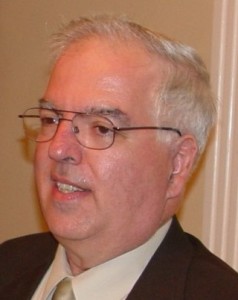Writing = Sharing
By Richard L. Sine
We collectors normally go through a sort of progression … not all of us, but I have to believe it applies to a very large percentage. First we obtain a stamp album, either for our home country or the world. Then comes the attempt to fill all of the pre-printed spaces. For some, that is most enjoyable and as far as those collectors go. Others tire of what they consider the repetition of purchasing or trading for stamps to mount into the albums.
 A next step is a specialization. It may be a larger U.S. album, a country album that represents the collector’s own heritage or where he/she has traveled, or stamps that represent something else the collector likes or likes to do … these are topical collections. Specialization can become as targeted as a collector wants: a single stamp issue, stamps of only a certain color, only postal stationery, and on and on.
A next step is a specialization. It may be a larger U.S. album, a country album that represents the collector’s own heritage or where he/she has traveled, or stamps that represent something else the collector likes or likes to do … these are topical collections. Specialization can become as targeted as a collector wants: a single stamp issue, stamps of only a certain color, only postal stationery, and on and on.
Once engaged in a specialized collection – or any depth – the collector begins research that further adds to the enjoyment. Note: the enjoyment aspect is key here. After all, why have a hobby if you are not going to enjoy it?
There are no limits to the breadth or depth of such research. Collectors may want to investigate how a given issue/stamp came to be, or how many varieties exist of a given issue and how best to describe/define them, or how a specific issue is used in the movement of mail … the latter really refers to older issues that had a specific reason for release.
Now we go back to the title of this article. When you have found something in your research, share it with others. There are any number of outlets for your research. All you need to do is put forth what you have learned in a very logical, straightforward manner. This is not the time, particularly if you are new to philatelic writing, for flowery language. Just get the information out there for others to learn.
Send your article to your local club publication, a specialty publication, or set up your own website where you will be able to expand on your work as well as allow others to react and comment. The digital world has opened a very expanded world for philatelic writing, which more than overcomes the loss of print periodicals over the recent past.
Some quick hints from a philatelic editor/writer who began in 1976:
- Lay out what you have learned, make your point, then stop writing that article
- Be certain your article has no spelling, grammar, or punctuation errors … get help before you are published
- Where possible, cite references so others are able to look for themselves
- Incorporate illustrations … philately is a visual hobby
Even with my hope that you will share your finding with others, only do so if you are comfortable as a writer. There is no obligation, merely an interest in sharing.



